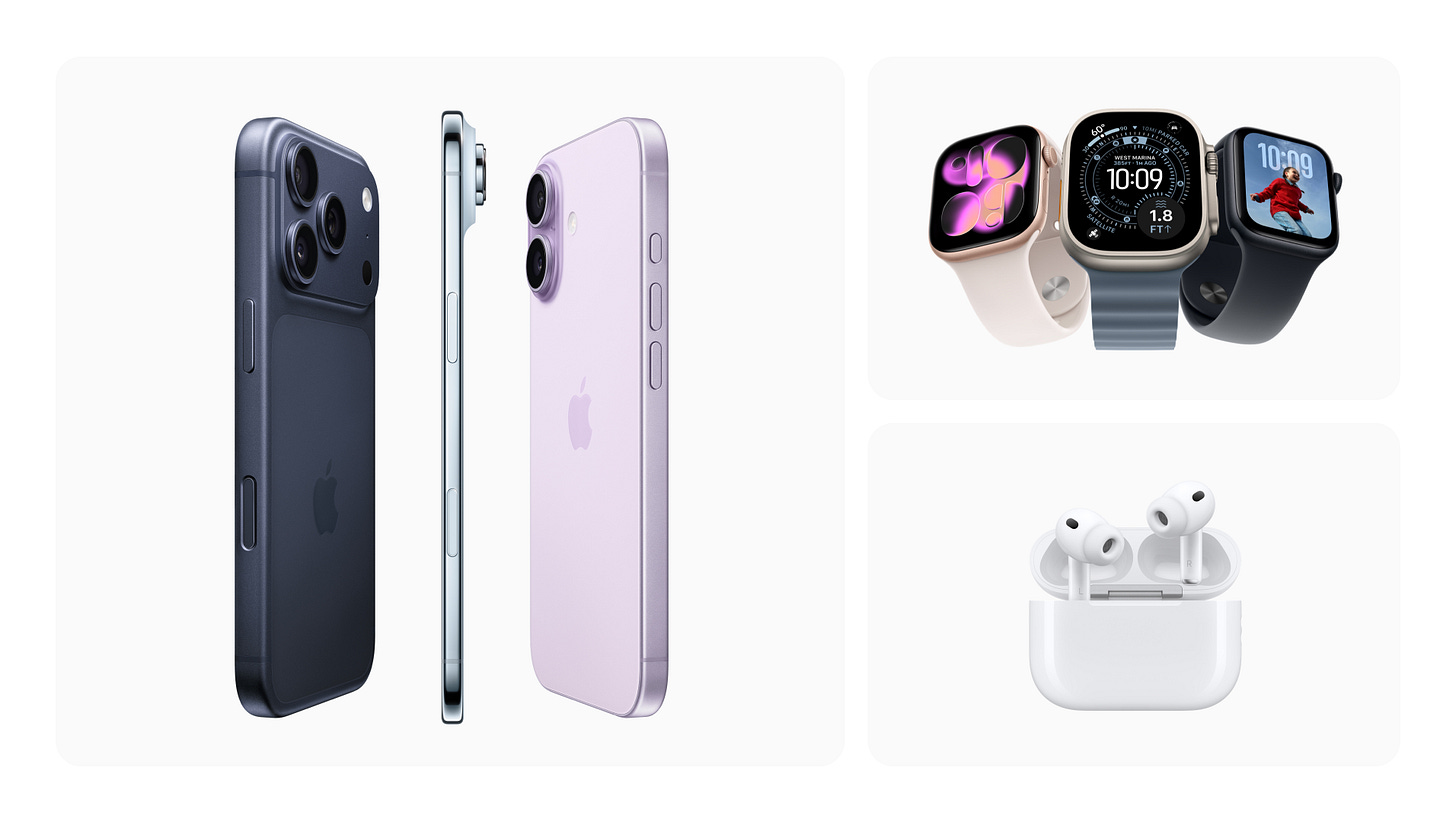iPhone 17, iPhone Air, Apple Watch Series 11, Ultra 3 & SE 3: What Apple Says vs. What They’re Really Building
Apple’s September keynote delivered the usual headlines: the iPhone 17 with brighter displays and ProMotion 120 Hz, the sleek iPhone Air, the Apple Watch Series 11 with hypertension alerts and sleep scoring, the rugged Apple Watch Ultra 3 with multi-day battery life, and the budget Apple Watch SE 3 now offering temperature and sleep apnea detection.
Specs. Screens. Sensors. Impressive headlines—but that’s not the full story.
Behind these updates lies a much bigger narrative: Apple’s quiet transformation from a hardware company into the sovereign operating system of daily life. They are shifting from selling devices to governing dependencies, preparing for a world where the smartphone is just one node in a larger, post-phone ecosystem.
Apple is quietly preparing a post-smartphone era, shifting away from the razor-and-blades business model. In the future, there might be no more devices to keep you hooked; instead, people will invest in lasting solutions—paying for health, wellness, performance, and continuity, rather than repeatedly fixing what was never fully complete.
From Devices to Life Infrastructure
Apple was once defined by hardware: iPods, iPhones, MacBooks, watches. Beautiful objects sold on predictable replacement cycles, driving high margins. That era is plateauing. Replacement cycles are slowing, incremental hardware differentiation is less defensible, and competitors can match much of Apple’s design.
The strategic pivot is subtle but profound: devices are now entry points to an ecosystem that controls health, identity, payments, and trust.
Apple Watch Series 11: More than a watch—Hypertension alerts, Sleep Score, and quasi-medical monitoring embed Apple in daily wellbeing.
Apple Watch Ultra 3 & SE 3: Advanced sensors, Always-On display, and extended battery life extend Apple’s reach across health and ambient intelligence.
iPhone 17 & iPhone Air: Brighter, Always-On ProMotion displays, A19 chip with N1 network processor, and enhanced camera systems—laying the foundation for spatial computing and invisible AI.
Apple isn’t selling features; it’s selling dependence.
Services as Predictable Revenue
Hardware still headlines, but services are the engine of growth: Apple One, iCloud+, Fitness+, Apple Music, and potential health analytics.
The insight is in the integration: Apple embeds these services in life-critical flows.
Sleep scores and health alerts enable premium health services.
Apple Pay, Apple Card, and BNPL integrate Apple into financial routines.
Bundles consolidate fragmented subscriptions into sticky, annuity-like revenue streams.
This transforms Apple from a cyclical device vendor into a predictable, recurring revenue machine.
Lock-In Across Domains
Apple’s moat now stretches across health, identity, and finance:
Health: ECG, blood pressure, cycle and sleep tracking. Quasi-medical device status increases switching costs.
Identity: Wallet houses IDs, car keys, and boarding passes. Apple becomes the trusted verification layer.
Finance: Apple Pay and Card embed the company into everyday financial transactions.
Each domain reinforces the others. Together, they form a web of dependence competitors struggle to penetrate.
Preparing for the Post-Smartphone Era
The iPhone 17 and new watches hint at a future where the phone is not the hub:
Spatial computing: Vision Pro prototypes the next interface, premium first, mass-market later.
Ambient AI: Invisible intelligence improves iOS and watchOS experiences—text prediction, photo curation, contextual assistance—without users ever “knowing” they’re using AI.
Persistent infrastructure: Health, identity, and financial services work across devices, ensuring Apple’s ecosystem remains indispensable as interfaces evolve.
The iPhone is a node; the ecosystem is the constant.
Apple as a Sovereign Operating System
The meta-strategy:
Products → Platforms → Sovereignty
Hardware cycles → Recurring services and life dependency
Design delight → Trusted governance (privacy, health, identity, finance)
Apple is creating a sovereign consumer operating system. Governments control passports; banks manage money; Apple controls the flows that underpin life itself. This is not consumer electronics—it is a parallel social infrastructure, wrapped in glass, aluminum, and silicon.
The Strategic Tension
Risks are real. Regulators scrutinize the App Store, health data, and financial services. Yet the payoff is unprecedented lock-in.
The iPhone 17, iPhone Air, Apple Watch Series 11, Ultra 3, and SE 3 may appear as incremental upgrades—but strategically, Apple is heavier, stronger, and harder to leave than ever. They are not just making devices; they are designing dependence.
Apple Business Model Evolution Timeline
To understand why Apple’s latest devices are more than incremental upgrades, it helps to trace how the company’s business model has evolved—from selling gadgets to managing the infrastructure of daily life.
Keep reading with a 7-day free trial
Subscribe to INNOVATION& by Yetvart Artinyan to keep reading this post and get 7 days of free access to the full post archives.



